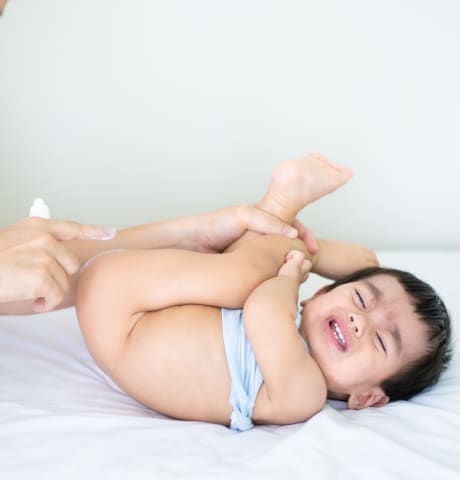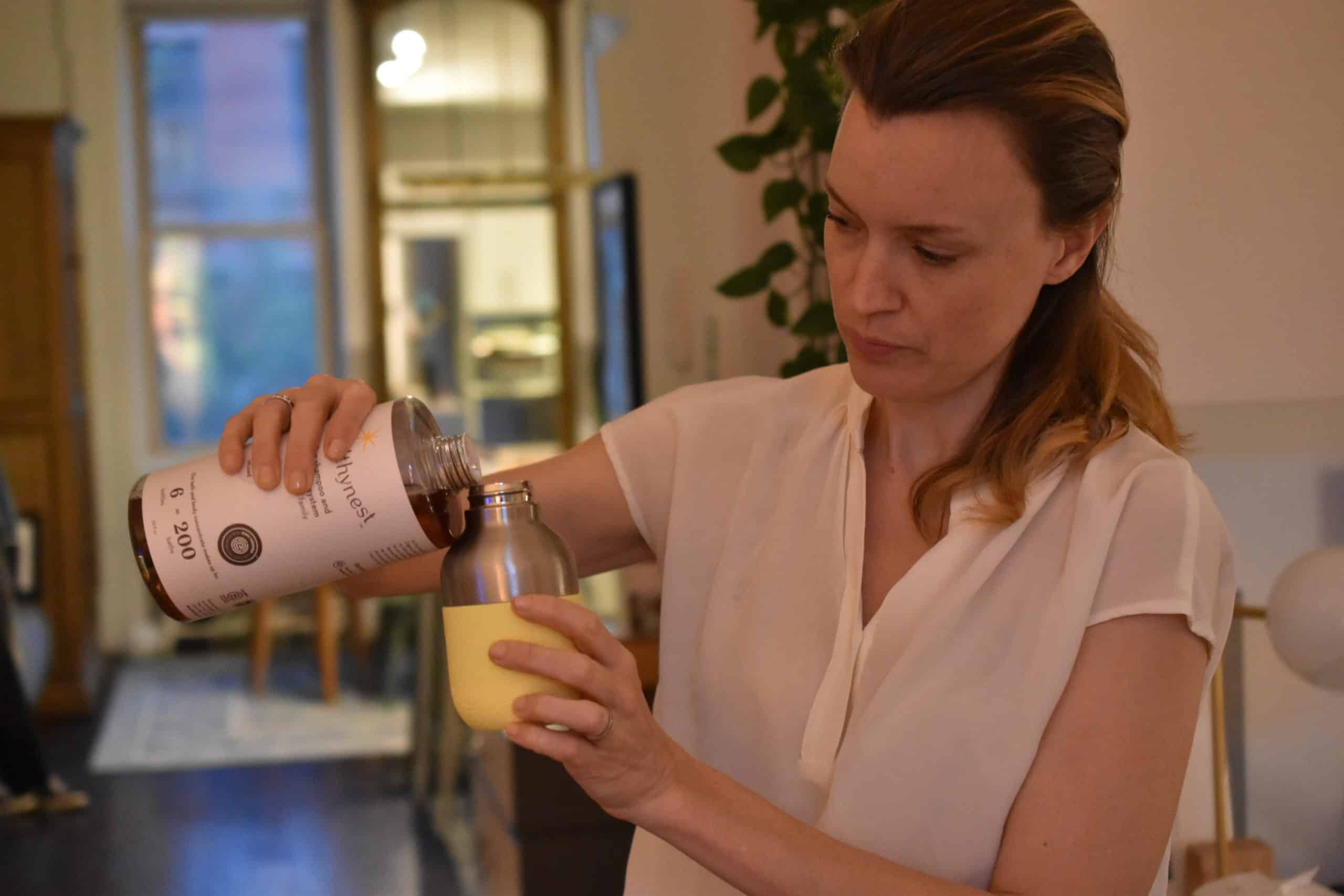Disposable Diapers and Diaper Rash: Prevention and Natural Remedies
Written by:
Maia James
08/18/2023

Updated: 01/23/2024
Looking for a different guide? Browse them all HERE.
Discovering inflamed patch of diaper rash on your baby is upsetting–it always made me wonder if I was eating something wrong (when breastfeeding) or feeding them something wrong, or using the wrong skincare products, or…. Basically, diaper rash was another rabbit hole of anxiety for me to fall into!
Diaper rash isn’t a medical diagnosis but a catch-all term that describes any irritation in the area covered by a diaper. A diaper rash can be a yeast infection or a general inflammatory response on your baby’s sensitive skin (dermatitis).
The most likely causes of diaper rash can range from excess moisture to poor diaper fit. Changes in diet or antibiotic use can sometimes trigger rashes, too. Many babies experience their first rash after they begin sleeping through the night. And some parents never really figure out why their baby has terrible diaper rash and another baby (even their own other baby!) doesn’t!
Whether you use disposable or cloth diapers, your baby will likely experience diaper rash at least once during infancy. According to the NIH, chemical irritation is one of the most common causes of diaper rash in our little ones.
We all of course want to find chemical-free diapers for our babies. Unfortunately, disposable diapers can contain chlorine, fragrances, phthalates, and other nasty substances.
We encourage you to consider making the switch to more eco-friendly, chemical-and-fragrance-free disposable diapers. In addition to being better for the planet, it might prevent diaper rash. Our Disposable Diaper Guide reviews dozens of brands for their safety as well as planet friendliness. But what if you’re already using better disposables and your baby still experiences a painful tush? You might be inclined to head to the store for a tube of something to soothe the diaper rash.
But wait—if chemicals possibly caused the irritation, will adding more chemicals really be helpful? We suggest that you look into one of the natural diaper rash remedies that parents have been using for generations.
As you know, I am not a big DIYer, so I have compiled our favorite store bought diaper rash creams here. But we’ve also gathered a few of our favorite remedies for natural diaper rash relief below.
Our Favorite Natural Diaper Rash Remedies
When we call a remedy “natural,” we mean that the treatment comes from nature and involves as few ingredients as possible. All of these remedies have plenty of research behind them.
As always, use your judgment and consult your pediatrician if you have questions.
Before applying remedies, clean and dry your baby’s bottom very carefully using water and a soft cloth. Soaps and chemicals (yes, even in baby wipes) can increase irritation and discomfort.

Breast Milk
Not only is this treatment all-natural, it’s also free! Research shows that breast milk treats diaper rash just as effectively as medicated creams. It also works as a preventative measure.
Rather than applying the milk directly to baby’s bottom, add some to their bathwater. It’s soothing on a painful tush, and there is scientific proof that it can increase healing time.
Apple Cider Vinegar
If you no longer produce breast milk, you can still give your baby an apple cider vinegar soak. This substance is naturally antimicrobial, making it ideal for treating yeast-related rashes.
Put about two tablespoons of apple cider vinegar into a large bowl of lukewarm water. Either have your baby sit and soak or use a cloth to apply the mixture to their bottom. Ideally, let it air dry completely before you proceed with diapering.
Aloe Vera
We love this a plant-based. A 2012 study found that aloe vera is a safe and effective treatment for diaper rash. Look for an organic aloe gel, and research the ingredients carefully. Look for a product with 95 to 100% pure aloe vera, like this one.
Aloe is naturally nourishing and antimicrobial, which is why many parents use it on sunburn, bug bites, or dry skin. It is also a natural source of antioxidants, which speeds up healing.
Just add a little bit of gel to baby’s diaper area. If possible, wait for it to dry completely before you proceed. Continue until the rash clears up.
Olive Oil
The idea of oiling up your sweet baby might feel like a hassle, but it’s often worth it! Research suggests olive oil is as effective as topical creams in the treatment of most diaper rash. This makes sense, as olive oil is a natural moisturizer with antimicrobial and anti-inflammatory properties.
Apply about one-half tablespoon of olive oil to baby’s skin. You can use it as a treatment or apply it after every diaper change. In both cases, it will keep good moisture in and bad bacteria out.
How To Prevent Diaper Rash All Together
What Didn’t Make the List
There are a few common natural diaper rash remedies that didn’t make our list. Reasons include unclear evidence or proof a remedy makes rashes worse. While these remedies aren’t all necessarily bad, they wouldn’t be our first choice.
They include:
- Cornstarch
In many cases, cornstarch may help with friction-related diaper rash discomfort. If candida is the cause of the rash, however, cornstarch can often make it much worse.
- Baking Soda
There is not enough research to suggest that baking soda is an effective treatment for diaper rash. In fact, at least one study suggests that too much exposure can be harmful.
- Coconut Oil
Coconut oil is a common ingredient in many natural diaper rash creams. At this time, there isn’t much evidence that coconut oil alone impacts diaper rash in any significant way. Most research is inconclusive.
Stick to the Good Stuff When Treating Diaper Rash
Diaper rash affects most babies at some point. You can help keep painful inflammation at bay with natural remedies. The remedies above are all science-backed and chemical-free.
Another option is to choose disposable diapers that are chemical, fragrance, and phthalate-free. Learn more about the best disposable diapers on the market in our disposable diaper product guide.
Stay sane,


Maia, Founder & CEO
Note: This article contains affiliate links or sponsored content, which means that if you make a purchase, we may earn a commission. We only recommend products that meet our strict standards for non-toxicity and that we use (or want to use!) ourselves. Thank you so much for supporting the brands that make Good Stuff!





Leave a Reply
You must be logged in to post a comment.